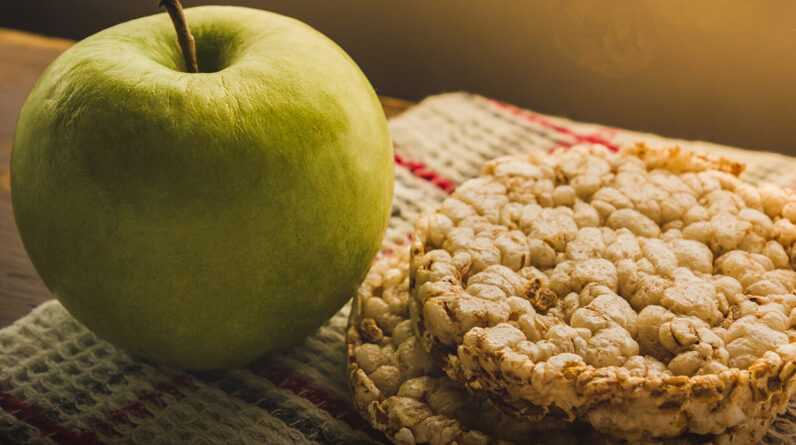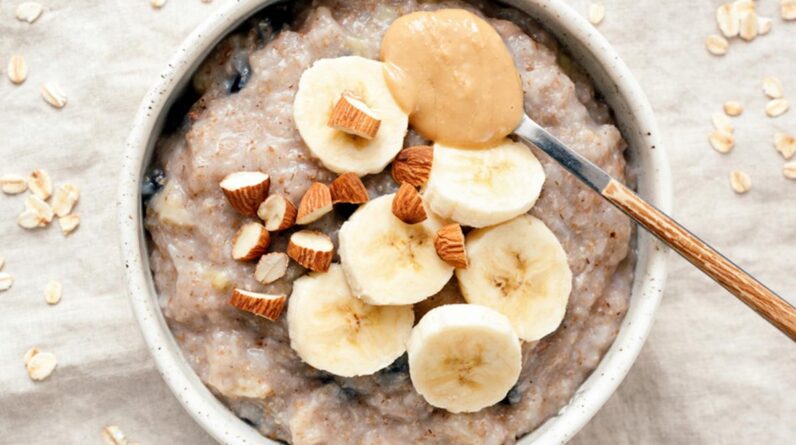
National Fiber Focus Month is a campaign dedicated to promoting the importance of fiber in our diet and its many health benefits. With a focus on educating individuals about the role of fiber in maintaining healthy digestion, reducing the risk of chronic diseases, and promoting weight management, this initiative aims to raise awareness and encourage the consumption of high-fiber foods.
By participating in various activities, such as webinars, community events, and informative resources, individuals can learn about different types of fiber, its sources, and simple ways to incorporate it into their daily meals. Join the movement and prioritize fiber-rich foods for a healthier lifestyle.
The Power Of Dietary Fiber
The power of dietary fiber cannot be overstated. Understanding dietary fiber and its importance to health is crucial for maintaining a balanced diet and overall well-being. Fiber is a carbohydrate that the body cannot break down and instead passes through the digestive system, providing various benefits.
There are two main types of dietary fiber: soluble and insoluble. Soluble fiber dissolves in water and forms a gel-like substance in the digestive tract, which helps regulate blood sugar levels and lowers cholesterol. Insoluble fiber, on the other hand, adds bulk to the stool, promoting regular bowel movements and preventing constipation.
Consuming a diet rich in fiber has numerous health benefits. It aids in weight management by promoting satiety and reducing the risk of overeating. Fiber also plays a crucial role in maintaining digestive health and preventing diverticulosis and hemorrhoids. Furthermore, it helps control blood sugar levels, reduces the risk of diabetes, and contributes to heart health by lowering cholesterol levels.
To incorporate more fiber into your diet, include foods such as fruits, vegetables, whole grains, legumes, and nuts. Aim for a daily fiber intake of at least 25-30 grams for optimal health benefits. So, make National Fiber Focus Month a time to prioritize your fiber intake and improve your overall health.
Benefits Of A High Fiber Diet
A high-fiber diet offers numerous benefits for overall health and well-being. Promoting digestive health and regularity, fiber aids in preventing constipation and keeping the digestive system functioning correctly. It adds bulk to the stool, making it easier to pass. Fiber also helps support weight management and satiety by providing a feeling of fullness, reducing cravings, and preventing overeating.
A high-fiber diet is also vital in managing diabetes and blood sugar levels. Soluble fiber slows the absorption of sugar, preventing significant fluctuations in blood sugar levels. Moreover, consuming fiber-rich foods aids in lowering cholesterol levels and reducing the risk of heart disease. Soluble fiber binds to cholesterol in the intestines and removes it from the body. Various high-fiber foods like fruits, vegetables, whole grains, legumes, and nuts can contribute to these beneficial effects.
Best Sources Of Dietary Fiber
Whole grains are a great way to incorporate more fiber into your diet. They are packed with nutrients and provide a healthy dose of fiber. Brown rice, quinoa, and whole wheat bread are excellent options.
Increasing your fiber intake through plant-based foods is another smart choice. Fruits such as apples, berries, and oranges are delicious and high in fiber. Regarding vegetables, broccoli, carrots, and spinach are among the top choices for fiber content.
Legumes are the fiber-rich superheroes of the protein world. Lentils, black beans, and chickpeas are excellent sources of both fiber and protein. Adding them to your meals can help boost your fiber intake.
Don’t forget about nuts and seeds! These crunchy snacks not only provide a satisfying texture but also deliver a good amount of fiber. Almonds, chia seeds, and flaxseeds are among the top picks.
How To Increase Your Fiber Intake
Increasing your fiber intake is a critical step toward achieving optimal health. However, setting realistic fiber goals to prevent digestive discomfort is essential. Gradually increasing your fiber intake over time is vital. Start by adding fiber-rich foods to your diet and progressively increasing the portions. This gradual approach allows your body to adjust and reduces the likelihood of digestive issues.
Meal planning can make it easier to incorporate high-fiber foods into your diet. Start by including various fruits, vegetables, whole grains, and legumes in your meals. Try adding chia seeds or ground flaxseeds to your oatmeal or smoothies for breakfast. Add vegetables and legumes into soups, salads, and stir-fries for lunch and dinner. Whole grains like quinoa and brown rice can also be excellent sources of fiber.
Sneaky ways to add more fiber to your favorite recipes
If you’re looking to boost the fiber content of your favorite recipes, there are several sneaky ways. Substitute white flour with whole wheat flour or almond flour in baking recipes. Add vegetables like shredded zucchini or carrots to baked goods like muffins or bread. Incorporate beans or lentils into dishes like chili or pasta sauces. You can also sprinkle of ground flaxseeds or chia seeds into yogurt, smoothies, or even homemade granola bars.
Soluble Vs. Insoluble Fiber: Understanding The Difference
Differentiating between soluble and insoluble fiber is crucial for maintaining good health. Soluble fiber dissolves in water, forming a gel-like substance in the digestive tract. This fiber helps lower cholesterol levels and regulates blood sugar, thus supporting heart health and managing diabetes. Foods rich in soluble fiber include oatmeal, beans, and fruits like apples and oranges.
On the other hand, insoluble fiber does not dissolve in water and helps promote regular bowel movements. It adds bulk to the stool, preventing constipation and promoting digestive health. Good sources of insoluble fiber are whole grains, vegetables, and nuts.
Including a combination of both fiber types in your diet is essential for overall well-being. Be sure to consume various high-fiber foods to maximize the health benefits they offer.

Credit: www.amazon.com
Fiber Supplements: Are They Necessary?
When considering the need for fiber supplements in your diet, evaluating your circumstances and dietary habits is essential. While fiber supplements can benefit individuals who struggle to meet their daily fiber requirements through food alone, they may not be necessary for everyone.
Before incorporating a fiber supplement into your routine, it is essential to consult with a healthcare professional or a registered dietitian to determine the right type and dosage specific to your needs. Different types of fiber supplements offer various health benefits and may affect the body differently. Selecting a supplement that suits your particular goals and preferences is crucial.
While fiber supplements are generally safe, they may have potential side effects such as bloating, gas, or abdominal discomfort. It is advisable to start with a low dosage and gradually increase over time to minimize digestive discomfort. Additionally, staying adequately hydrated when consuming fiber supplements is essential to ensure effectiveness and prevent constipation.
Fiber And Gut Health: The Connection Explained
Fiber plays a crucial role in maintaining good gut health. The impact of dietary fiber on gut microbiota is significant, as it helps to promote the growth of beneficial bacteria in the digestive system. A healthy gut is essential for overall well-being, supporting efficient digestion and nutrient absorption.
Eating fiber-rich foods can help to maintain a healthy gut. Fiber adds bulk to the stool, promoting regular bowel movements and preventing constipation. It also acts as a prebiotic, fueling the beneficial bacteria in the gut. Some good sources of dietary fiber include fruits, vegetables, whole grains, and legumes.
Aim for a variety of fiber-rich foods and make gradual changes to increase your fiber intake to ensure you are getting enough fiber in your diet. Start by incorporating more fruits and vegetables into your meals, choosing whole grain options, and adding beans or lentils to your dishes. Remember to drink plenty of water, as fiber needs water to work effectively in the digestive system.
By prioritizing fiber-rich foods, you can support a healthy gut and reap its many benefits to your overall well-being. So, make sure to include a variety of fiber sources in your daily diet to maintain good gut health.
Recipes That Pack A Fiber Punch
Are you looking to add more fiber to your diet? Start your day off right with a delicious and nutritious high-fiber breakfast. Choose from a fiber-rich breakfast bowl topped with fresh berries and nuts or a hearty oatmeal packed with fiber and flavor.
For lunch and dinner, try incorporating more fiber into your meals with recipes like a delicious lentil soup or a quinoa and black bean salad. These fiber-rich dishes will keep you satisfied and provide you with essential nutrients.
Don’t forget about fiber when it’s a snack or dessert time! Enjoy a slice of whole-grain banana bread or a handful of roasted chickpeas. These satisfying snacks and desserts are tasty and packed with fiber.
With these fiber-packed recipes, you can quickly meet your daily fiber requirements while enjoying delicious and nutritious meals.
Overcoming Common Fiber-related Challenges
In National Fiber Focus Month, many individuals aim to increase their fiber intake to improve digestive health and overall well-being. However, some may face common challenges when incorporating more fiber into their diets.
One issue that can arise is bloating and other digestive problems, which can be uncomfortable and discouraging. To address this, it is important to start gradually and drink plenty of water to help fiber move through the digestive system more smoothly. Additionally, for those on low-carb or gluten-free diets, increasing fiber intake may seem daunting.
However, various sources of fiber are low in carbs or gluten-free, such as chia seeds, avocados, and nuts. For individuals with specific dietary restrictions, it is recommended to consult a healthcare professional or registered dietitian to find suitable sources of fiber. By overcoming these challenges, individuals can enjoy the many health benefits of fiber.
Dates of National Fiber Focus Month
| Year | Date | Day |
|---|---|---|
| 2024 | January 1 | Monday |
| 2025 | January 1 | Wednesday |
| 2026 | January 1 | Thursday |
| 2027 | January 1 | Friday |
| 2028 | January 1 | Saturday |
Frequently Asked Questions Of National Fiber Focus Month
What Is The Daily Fiber Usda?
The daily fiber USDA refers to the recommended dietary fiber consumption set by the United States Department of Agriculture. It is essential to meet this daily requirement for optimal digestive health and overall well-being.
What Is The US Fiber Recommendation?
The US recommends consuming around 25 grams of fiber for women and 38 grams for men daily. A high-fiber diet promotes digestive health and can lower the risk of certain diseases like heart disease and diabetes.
What Food Is Highest In Fiber?
The food that is highest in fiber includes legumes like beans, lentils, and chickpeas, whole grains such as oats and quinoa, fruits like raspberries and pears, and vegetables such as broccoli and Brussels sprouts.
Which Fruit Has The Most Fiber?
Among fruits, raspberries have the most fiber per serving. They provide about 8 grams of fiber, making them an excellent choice for a high-fiber diet.
Conclusion
Fiber Focus Month shines a much-needed spotlight on the importance of fiber in our daily lives. From improving digestion to reducing the risk of chronic diseases, fiber is vital in maintaining overall health. By embracing National Fiber Focus Month, we can encourage awareness and education about the benefits of fiber-rich foods and ensure a healthier future for all.
Let’s prioritize fiber and reap the rewards of a balanced and nourishing diet.





